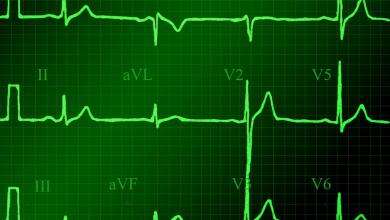Search results
The Promise of Leadless Pacing
Author(s):
Katrina Mountfort
,
Reinoud Knops
,
Johannes Sperzel
,
et al
Added:
3 years ago
Article
A Critical Reappraisal of the Current Clinical Indications to Cardiac Resynchronisation Therapy
Author(s):
Antonio Sorgente
,
Riccardo Cappato
Added:
3 years ago
Article
Author(s):
Manoj N Obeyesekere
,
Andrew D Krahn
Added:
3 years ago
Early repolarisation (ER) is defined as J-point elevation of ≥0.1 mV in two adjacent leads with either a slurred or notched morphology (Figures 1 to 4).1,2 Numerous studies have established an association with ER and increased risk of death and idiopathic ventricular fibrillation (VF).1–5 Clinicians face questions such as patient and family counselling, quantitifying the risk of sudden cardiac…
View more
Author(s):
Sanjiv M Narayan
,
David E Krummen
Added:
3 years ago
Atrial fibrillation (AF) is the most prevalent arrhythmia in the world and a leading cause of hospitalisation and death.1 Current therapy for AF remains suboptimal, in large part because its mechanisms are uncertain. However, recent advances in our understanding of human AF, from meticulous mapping in patients and insights from animal models, are providing new therapeutic options for patients.
…
View more
Author(s):
Jens Kienemund
,
Karl-Heinz Kuck
,
Christian Frerker
Added:
3 years ago
Prevalence of Functional Mitral Regurgitation in Patients with Chronic Heart Failure
Secondary or functional mitral regurgitation (FMR) is a common problem in patients with chronic heart failure (HF) due to dilated cardiomyopathy, regardless of aetiology.1 FMR results from an imbalance between the closing and the tethering forces that act on the mitral valve leaflets.2,3
A chart review of…
View more
Author(s):
Tom Nelson
,
Pankaj Garg
,
Richard H Clayton
,
et al
Added:
3 years ago
Ventricular tachycardia (VT) and VF occur mainly in people with impaired cardiac function and/or ischaemic heart disease, and account for the majority of sudden cardiac deaths worldwide.1 Treatment with anti-arrhythmic drugs such as amiodarone may be at best neutral in terms of mortality and carries significant long-term risks.2,3 While ICDs significantly improve survival for patients with…
View more
Author(s):
Josef Kautzner
,
Petr Peichl
Added:
3 years ago
Ventricular fibrillation (VF) is a complex arrhythmia that leads invariably to cardiac arrest. Its mechanisms remain largely unclear. Similar to atrial fibrillation, the mother rotor hypothesis is one plausible alternative.1,2 In larger animals, some authors reported that the dominant frequency of VF could be recorded at a junction of the left ventricular posterior wall and the septum.3-6 Others…
View more
Author(s):
Adam J Graham
,
Richard Schilling
Added:
2 years ago
Author(s):
Baldeep S Sidhu
,
Justin Gould
,
Mark Elliott
,
et al
Added:
3 years ago
Author(s):
Hussam Ali
,
Pierpaolo Lupo
,
Riccardo Cappato
Added:
3 years ago
Numerous large clinical trials have demonstrated the benefit of implantable cardioverter-defibrillators (ICDs) to prevent sudden cardiac death (SCD) in selected populations.1,2 These results and advances in defibrillation therapies have led to an impressive expansion of ICD implants and indications in recent decades. Although initially focusing on secondary prevention, current ICD indications…
View more












 « First
« First